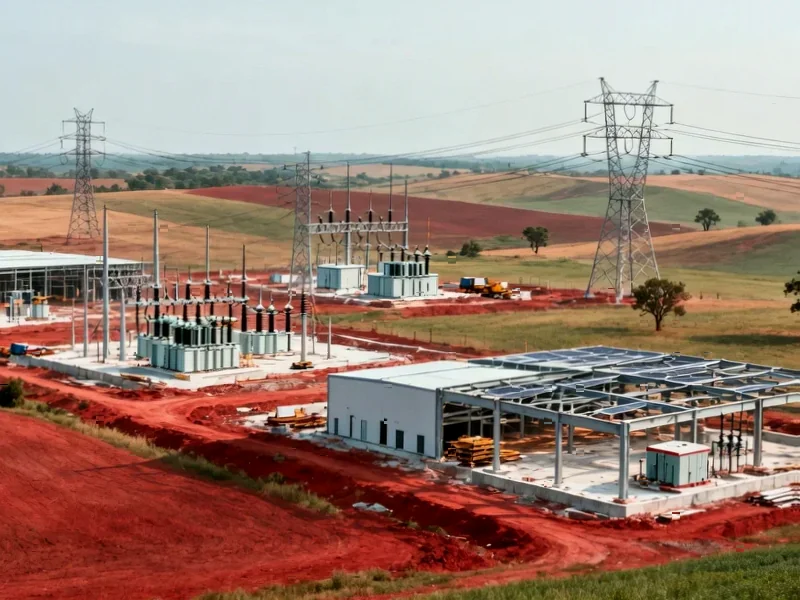According to DCD, Sidus Space has finalized its Commercial Pathfinder Mission Agreement with Lonestar Data Holdings to design, develop, and integrate edge processing digital data storage payloads into LizzieSat-5 low-Earth orbit satellites. The mission builds on an existing $120 million agreement between the companies for lunar data storage spacecraft development and will operate at LEO altitudes between 500-550km. Sidus Space founder and CEO Carol Craig stated that the partnership exemplifies how modular satellite design can rapidly advance commercial space innovation by enabling new applications for edge computing in orbit. This development comes amid growing interest in orbital data processing, highlighted by Jeff Bezos’ recent comments about potential space-based data centers at Italian Tech Week 2025.
The Technical Architecture Behind Orbital Edge Computing
The LizzieSat platform represents a significant advancement in modular satellite design that enables rapid integration of specialized payloads like Lonestar’s data storage systems. Unlike traditional satellites with fixed architectures, LizzieSat’s modular approach allows for custom payload configurations that can be optimized for specific computational workloads. This flexibility is crucial for edge computing applications where processing power, storage capacity, and thermal management must be precisely balanced. The satellite’s LEO positioning at 500-550km altitude provides lower latency than traditional geostationary orbits while still offering reasonable orbital stability for continuous operations.
Overcoming Extreme Thermal Management Challenges
The thermal environment in LEO presents one of the most significant technical hurdles for orbital data centers. Without atmospheric protection, satellites experience temperature swings from -150°C to over 220°C as they move between sunlight and shadow. Traditional terrestrial data center cooling methods like air conditioning or liquid cooling are impossible in vacuum conditions. Instead, these systems must rely on radiative cooling techniques using specialized coatings and heat pipes to dissipate processor-generated heat into space. The limited surface area available on small satellites like LizzieSat-5 makes this particularly challenging, requiring innovative thermal interface materials and distributed computing architectures to prevent hotspots from developing.
The Reality of Orbital Power Generation
Contrary to Jeff Bezos’ optimistic projections about 24/7 solar power, the orbital environment actually presents complex power management challenges. Satellites in LEO experience approximately 45 minutes of daylight followed by 45 minutes of darkness during each 90-minute orbit. This means solar panels can only generate power about 50% of the time, requiring sophisticated power storage and management systems to maintain continuous operation. The LizzieSat platform must balance computational workloads with available power, potentially implementing dynamic power scaling that reduces processing during eclipse periods and maximizes performance when solar power is available.
Cybersecurity and Data Sovereignty Implications
Orbital data storage introduces unique security considerations beyond terrestrial data centers. While physical security against theft or natural disasters is inherently improved in space, the systems face increased vulnerability to cyber attacks and anti-satellite weapons. Consolidating sensitive data in orbital facilities creates high-value targets that could attract sophisticated attacks. The distributed nature of Sidus’ LizzieSat constellation approach helps mitigate this risk by spreading data across multiple satellites rather than concentrating it in single facilities. This architecture aligns with emerging sovereign data storage requirements for government and enterprise clients who need assurance that their data remains secure from both terrestrial and orbital threats.
Broader Market and Infrastructure Implications
The Sidus-Lonestar partnership represents a strategic move toward establishing space-based data infrastructure that could eventually support lunar and deep space missions. By demonstrating reliable edge computing capabilities in LEO, the companies are building foundational technology for future interplanetary networks where latency makes Earth-based cloud computing impractical. This development also signals growing commercial interest in space-based digital infrastructure beyond traditional communications, potentially creating new markets for orbital data processing services that leverage the unique environmental advantages of space while navigating its considerable technical constraints.




